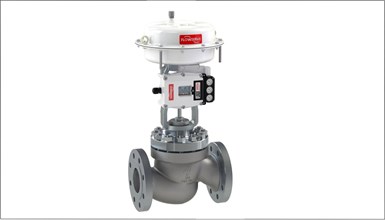Flowserve Enhances Design of Valtek FlowTop Control Valve for General Service
The new valve offers the same performance and options in an automated package that includes an in line, globe-style body with a FlowAct pneumatic diaphragm actuator and digital positioner.
#VMAnews

Flowserve has improved the design of the Valtek FlowTop control valve to meet the global requirements for general service and moderately severe service applications.
The new FlowTop General Service valve builds on the proven FlowTop GS and Valtek GS control valves to meet a broad range of requirements by providing: one standardized, versatile control valve, precision control; a variety of trim and packing options; simplified maintenance; and cost savings through parts interchangeability.
The valve includes a fully integrated package features an updated streamlined design for maximum performance and operating efficiency in all general service applications. Its updated design is easy to select, size, configure and order.
A standardized design with interchangeable components simplifies maintenance and minimizes costs related to inventory and spare parts. In addition, the valve offers packing options to meet stringent fugitive emissions requirements (ISO 15848-1 Class B CC1). Also available are multiple seat designs (threaded or clamped), packing options (external or internal live loaded) and single-stage trim solutions for mild cavitation and noise reduction.
RELATED CONTENT
-
Virtual Valve Forum and Basics Event Draws Attendees from Across the Industry
More than 200 people from across the valve industry participated virtually in the VMA Valve Forum and Valve Basics event, which included 4 days of presentations on technical, manufacturing, management and marketing, valves 101, and valve repair.
-
Editor's Product Picks
Neles introduces valve-sizing and selection software for all intelligent automated process valves.
-
An Interview With ... Matt Thiel
Matt Thiel, president of AUMA Actuators, was named chairman at VMA’s 2022 annual meeting.











 Unloading large gate valve.jpg;maxWidth=214)